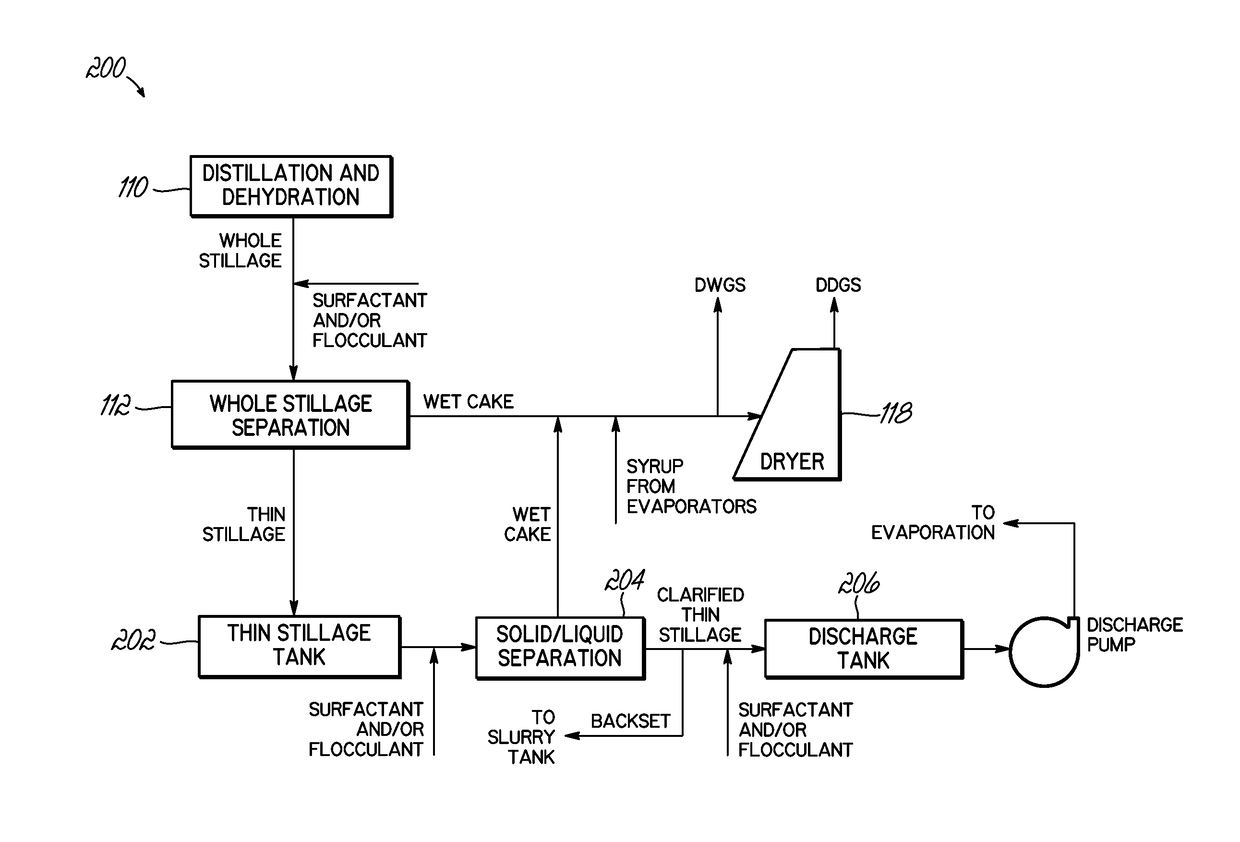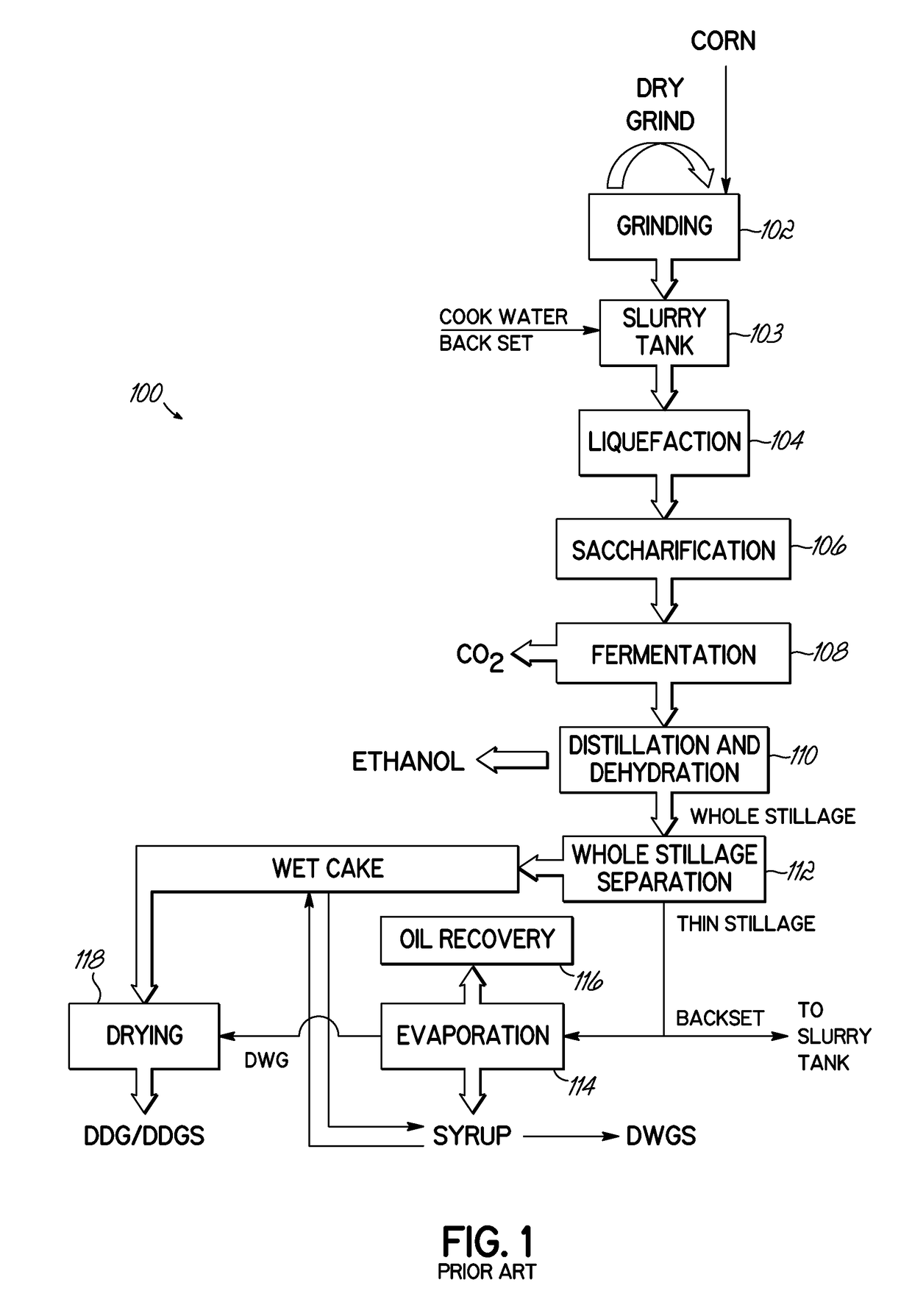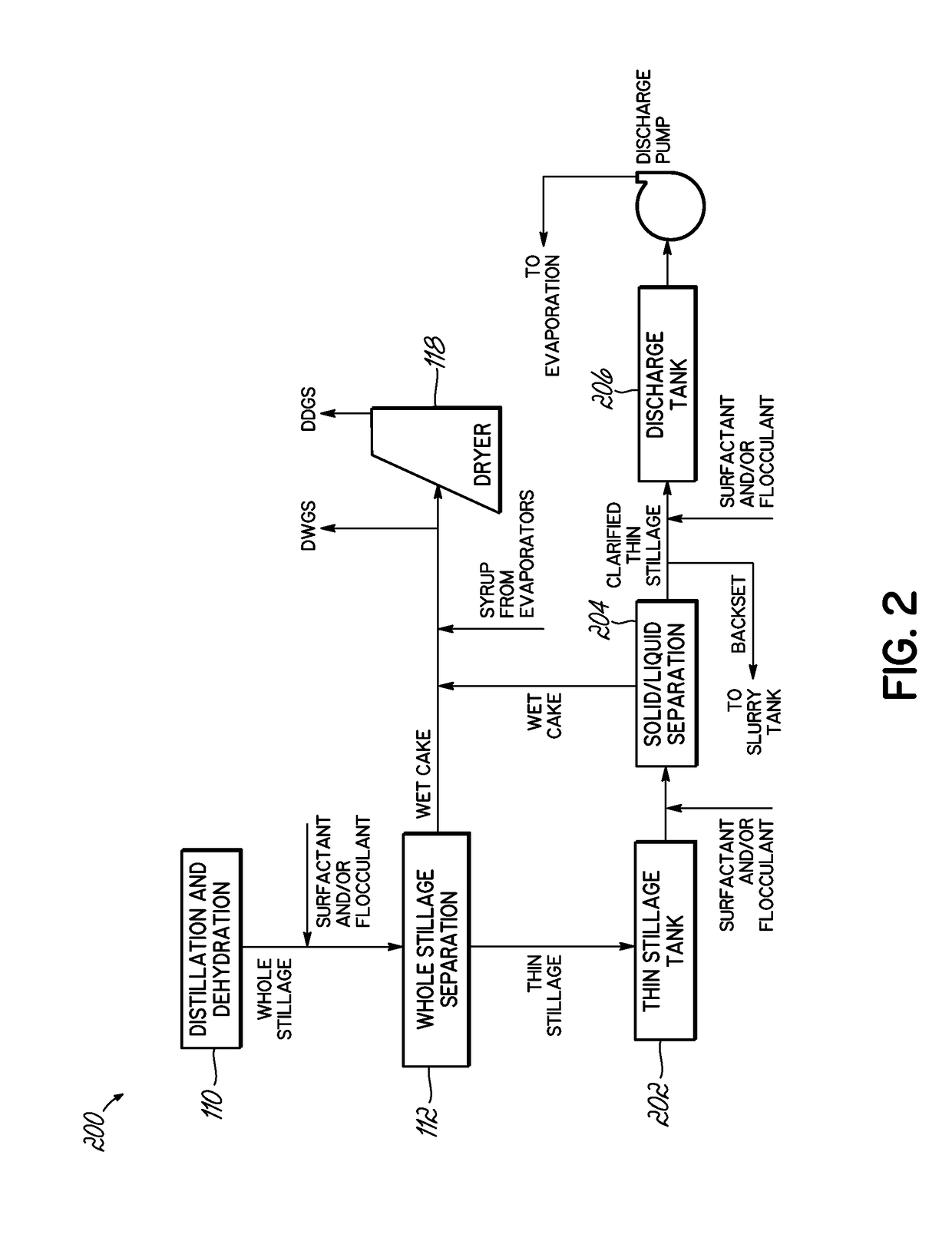System and process for clarifying thin stillage
a technology of system and process, applied in the field of system and process for clarifying thin stillage, can solve the problems of high capital investment, high energy and utility cost for operation, and low overall yield of various co-products in the wet grind process
- Summary
- Abstract
- Description
- Claims
- Application Information
AI Technical Summary
Benefits of technology
Problems solved by technology
Method used
Image
Examples
Embodiment Construction
[0022]FIG. 1 has been discussed above and represents a flow diagram of a typical dry grind ethanol production process.
[0023]FIGS. 2-3B illustrate various embodiments of a system and process 200, 300, 300a, and 300b for clarifying at least a portion of a thin stillage stream in a biofuel production process, e.g., a dry grind alcohol production process, which are improvements over conventional processes and others. As discussed above, typically, a thin stillage stream is split at the back end to provide backset, which helps slurry the ground corn at the front end of the dry grind process, and to feed the evaporators to produce syrup. This split percentage can range from about a 20:80 ratio of evaporator feed to backset to about an 80:20 split, and at rare facilities 100% of the thin stillage can be sent to the evaporators. On average, the split is about 50:50, but is should be appreciated that this is a plant-by-plant specific ratio, which can be determined by the overall water balanc...
PUM
| Property | Measurement | Unit |
|---|---|---|
| Evaporation enthalpy | aaaaa | aaaaa |
Abstract
Description
Claims
Application Information
 Login to View More
Login to View More - R&D
- Intellectual Property
- Life Sciences
- Materials
- Tech Scout
- Unparalleled Data Quality
- Higher Quality Content
- 60% Fewer Hallucinations
Browse by: Latest US Patents, China's latest patents, Technical Efficacy Thesaurus, Application Domain, Technology Topic, Popular Technical Reports.
© 2025 PatSnap. All rights reserved.Legal|Privacy policy|Modern Slavery Act Transparency Statement|Sitemap|About US| Contact US: help@patsnap.com



